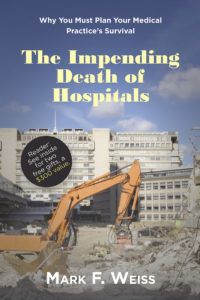Earlier this month, Pinnacle Bank Texas “purchased” the tallest building in Fort Worth, valued in 2021 at $137.5 million, for $12.3 million, or $12.30 per square foot. You’d think Pinnacle is on a shopping spree, considering that earlier the same week, it “purchased” a four-building office complex for $30 million which works out to $66 per square foot.
No, Pinnacle isn’t a savvy buyer. Those “purchases” were foreclosure sale credit bids, the amount of the bad loans on which the borrower defaulted, which means, for example, that no one else wanted to pay even $12.300001 million for a one million square foot office building.
Inherent in commercial property foreclosures is the fact that the defaulting owner wasn’t able to refinance its way out of the mess, a symptom of higher interest rates and concomitant difficulty in qualifying for loans.
As you probably know, for a bank, foreclosing on real estate, especially nonperforming real estate that eats cash, is like AIDS. Not only is there no cash flow in, there’s cash flow out, and it endangers the bank’s ability to meet solvency requirements and, therefore, risks the foreclosure of its own existence.
And, inside that mess is the fact that banks in a precarious solvency position cut back on lending to save their own skin. Further compounding the spiral is that lending is how banks make money; it’s their actual stock in trade.
According to the Mortgage Bankers Association, twenty percent of the $4.7 trillion of outstanding commercial mortgages (that’s close to $1 trillion) will come due in 2024.
It’s likely that many will be un-refinanceable and, therefore, will end up “bank owned”, pulling more banks into their own solvency trap.
The combination of higher interest rates in general plus the fact that stressed banks can’t or won’t lend is leading to a credit crisis in general, and that includes for medical groups and healthcare businesses of all sorts, from ASCs to hospitals to you name it.
This is the virus that drove Envision Healthcare’s Chapter 11 Bankruptcy, Florida-based Cano Health’s Chapter 11 Bankruptcy, and American Physician Partners liquidation. [See, for example, this article and this one.]
Physician practices, ASCs and other small to medium healthcare business entities, many of which have had only deposit relationships with banks, or which have had relatively low lines of credit, need to actively work to establish relationships with multiple potential lenders.
There are strategic ways to create those relationships. None of them involve “applying for a loan” or are timed around the need to do so.
Reach out to me now, well in advance of any need for funds, to discuss implementing what can be a lifesaving strategy.





